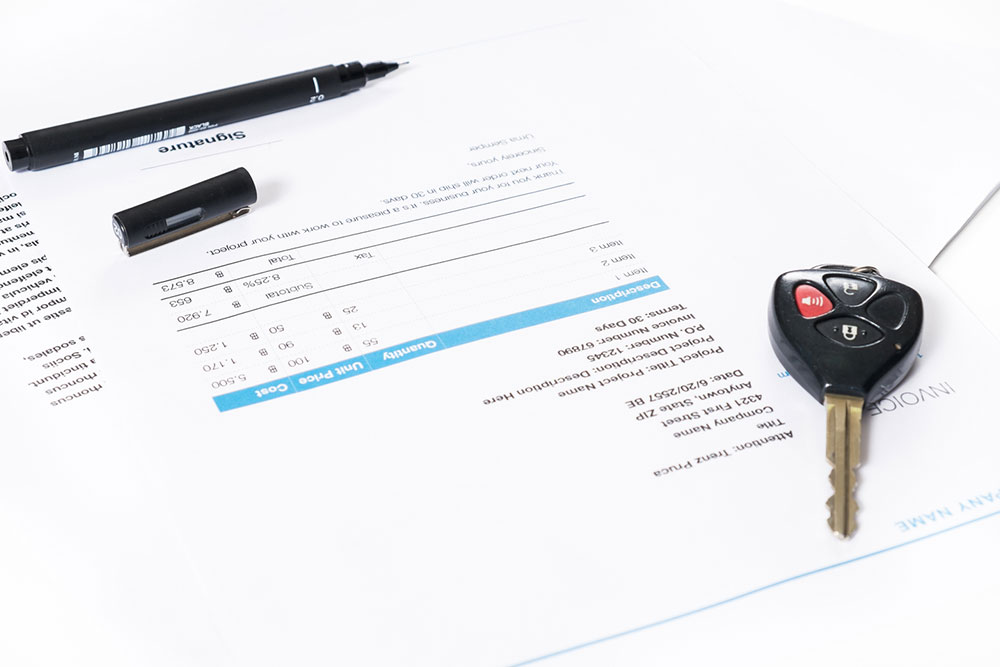4 Ways to Get an Automotive Loan Without a Down Payment
Buying a new vehicle can be quite exciting. It simplifies travel and transport arrangements and brings the prestige and joy of owning a vehicle. Those planning to purchase one can consider two ways of financing it, i.e., through cash and credit. While cash is a straightforward option, generally involving bank transfers, credit can be a bit challenging, as it brings with it the hassle of additional negotiations, down payments, and interest payments.
Ways to get a loan without a down payment
Putting a down payment between 10% and 20% is generally advisable to ensure a better interest rate while getting a car.

1. Keep the paperwork ready
Those who want a loan without a down payment need to keep their paperwork ready to secure one and get a fighting chance at the bank. This includes documents such as a driver’s license, proof of identity, proof of income, like recent pay stubs and bank statements, and proof of residence, like utility bills or a rental agreement. Having these documents ready to go will show the bank officials how serious one is about the purchase, which may be fruitful in waiving the down payment clause from the loan.
2. Improve the credit score
A good credit score is a powerful weapon when applying for a loan in the country. Banks and lending institutions are much more likely to offer a more appealing interest rate or other loan terms to those with a steady job or stream of income, those who have lived in one place for over a year, and those with a good credit history.
One may wonder about the score they need to aim for. A credit score of 680 or higher is often considered ideal for getting decent loan terms. Scores between 580 and 679 are considered sub-prime. While people in this category may still be eligible for zero-down auto loans, they will likely pay more interest over time. Those under 580 may not be eligible for automotive loans, in which case getting a loan for bad credit is advisable.
Fortunately, several steps can be taken to improve this credit score. To begin with, one must check the accuracy of their credit report. If there are any mistakes, flag them immediately with the credit bureaus and have them corrected. Apart from this, work on paying all bills on time and maintaining a credit utilization rate between 25% and 30% for a higher score.
3. Get a co-signer
Improving a credit score takes some time. Those rushing to get a vehicle can consider getting a loan with a co-signer with a strong credit score. A co-signer is a known person, such as a family member or friend, who adds their information and pledges to pay the bank back if the original lender cannot.
While this may sound like an appealing option or a quick fix, there are some things to consider. If the original lender defaults on their payments, it will likely affect both individuals’ credit scores. Over time, this may sow the seeds for conflict or mistrust in the interpersonal relationship, which can be difficult to deal with. One must maintain organized records of all their payments to avoid such issues. Ensure that these payments are made on time to minimize the overall risk.
4. Shop around
Not all loans are built the same. Some lenders or banks may be willing to offer better terms for financing the vehicle. It is crucial not to go with the first quote lenders offer. In larger cities like Guadalajara, Tijuana, and Xalapa, several auto dealerships, local credit unions, banks, and other alternative loan providers are willing to offer automotive loans without a down payment.
Do a quick online search to find out the current auto loan rates, and check if any online lenders are willing to offer attractive interest rates with a zero-down payment loan. Another thing to remember is that one can still negotiate these rates. Knowing about the current rate across the market will help one leverage this information and negotiate for better loan terms.
Things to keep in mind
Don’t rush to sign an attractive loan agreement. It is vital to take ample time to review the fine print and ask the loan agent as many questions as needed. One should also check for hidden costs, fees, or other discrepancies that may dampen the car-buying experience. While getting a loan without a down payment is possible, saving up or collecting the money for a down payment can be a better financial decision.
While a 20% down payment used to be standard, this number has dropped closer to 10% due to the rising rate of vehicles and inflation. One can consider buying a smaller or cheaper vehicle to reduce the overall value and afford the down payment. Alternatively, delay the buying process until it is possible to afford the loan and boost the credit score for great buying terms.

